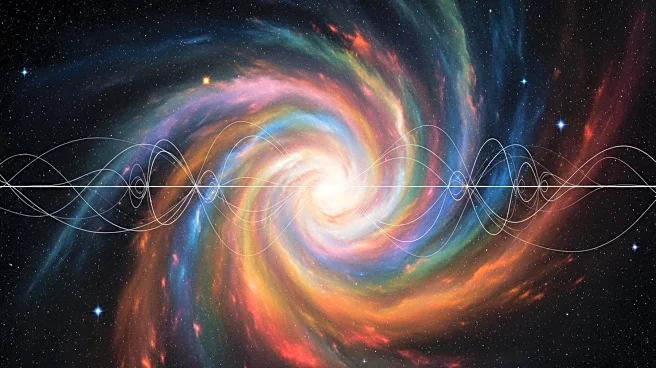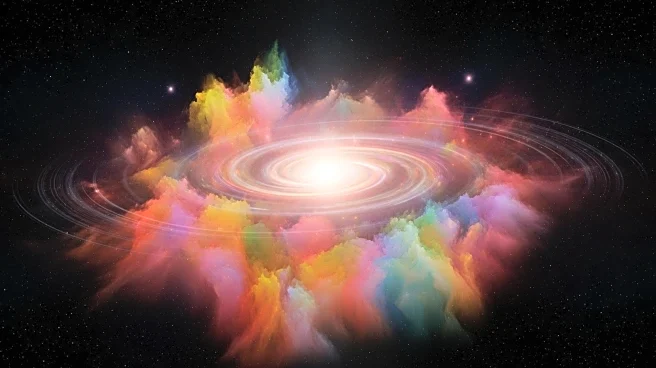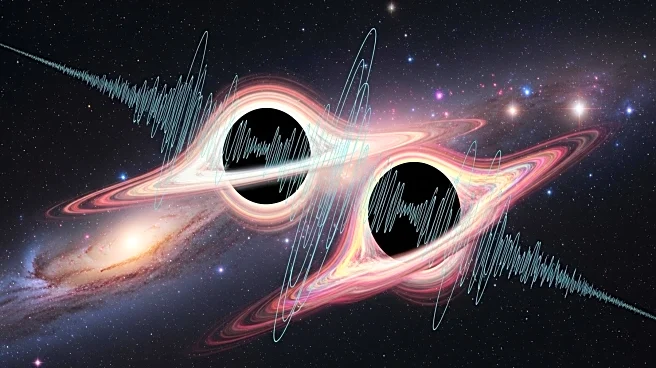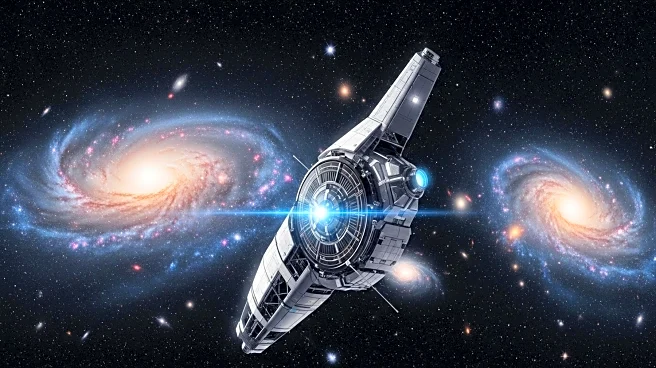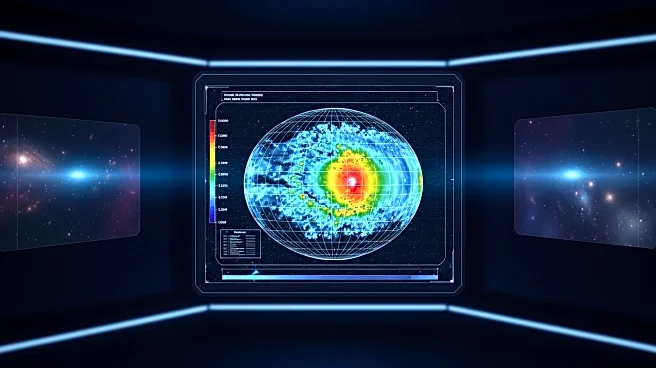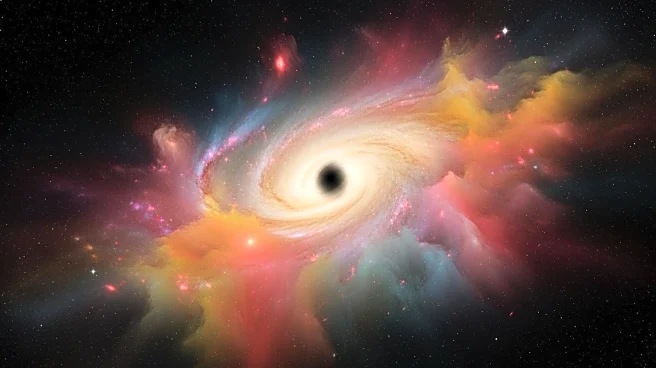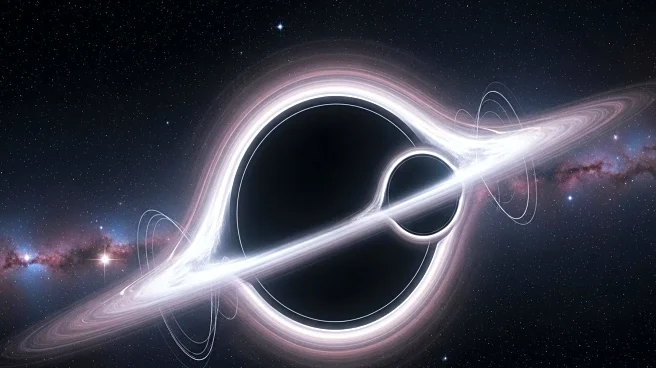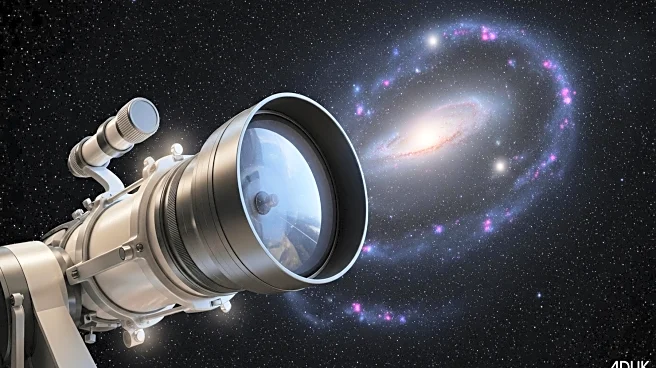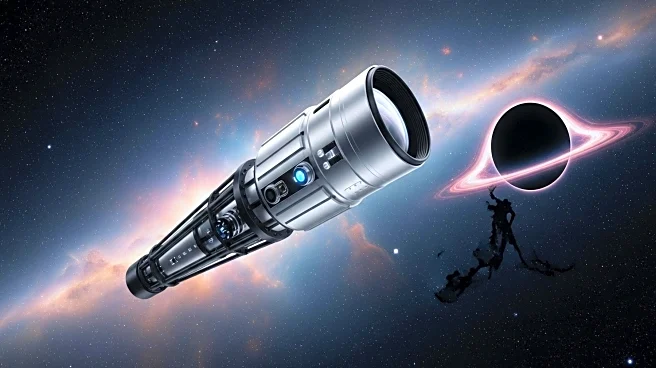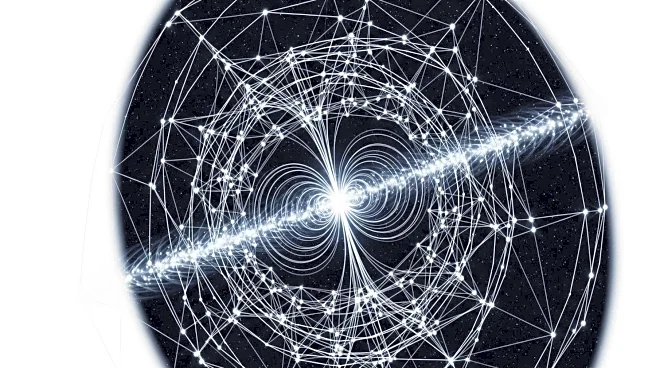What's Happening?
A new theory suggests that gravitational waves, rather than hypothetical fields and particles, could have created galaxies, stars, and planets following the Big Bang. This model challenges the inflationary paradigm, which posits rapid expansion of the universe due to a repulsive force generated by an 'inflaton' field. Instead, the new theory proposes that natural quantum oscillations of spacetime, in the form of gravitational waves, were sufficient to trigger density fluctuations leading to cosmic structures. This approach aims to simplify the understanding of the universe's origins by reducing speculative parameters.
Why It's Important?
This theory could revolutionize our understanding of the universe's formation by providing a more streamlined explanation of cosmic evolution. By eliminating speculative elements, the model offers a potentially falsifiable framework that could be tested through astronomical observations. If validated, this approach could lead to a deeper understanding of gravity and quantum physics, influencing cosmological models and our perception of the universe's birth. The theory highlights the importance of gravitational waves in shaping cosmic structures, offering new insights into the forces governing the universe.
What's Next?
The theory requires validation through observational evidence, including measurements of the cosmic microwave background and primordial gravitational waves. Future research will focus on testing the model's predictions against real data from ground-based and space-based experiments. If confirmed, this theory could redefine our understanding of cosmic evolution and the role of gravitational waves in the universe's formation. Continued exploration and collaboration among scientists will be essential in advancing this line of inquiry.
